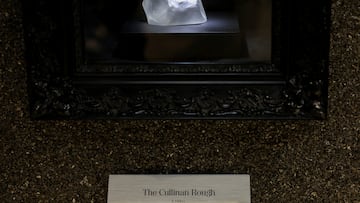NATURE
How much is the world’s largest diamond worth? When and where was it discovered?
The world’s largest gemstone was unearthed more than 100 years ago and now forms part of the British crown jewels.

The largest diamond ever discovered is the Cullinan Diamond. It was found on 26 January, 1905, in the Premier No. 2 mine in South Africa, then a part of the British Empire.
The size and scale of the diamond is extraordinary. The diamond weighed about 3,106 carats (1.37 pounds or 621.35 grams) in its rough form. This is nearly twice the size of the second largest, the Sewelô diamond.
The Cullinan Diamond was named after Thomas Cullinan, the chairman of the mining company that owned the mine. The diamond was “presented” to the British where it was eventually cut into several large and smaller gems, with the two largest pieces incorporated into the British Crown Jewels.
The two main gems cut from the Cullinan Diamond
Cullinan I (Great Star of Africa): This is the largest clear-cut diamond in the world, weighing about 530.2 carats. It is set in the head of the Sovereign’s Sceptre with Cross and is located in the Tower of London as part of the British Crown Jewels.
Cullinan II (Lesser Star of Africa): This diamond weighs approximately 317.4 carats and is set in the front of the Imperial State Crown, also part of the British Crown Jewels.
Calls for Britain to return the diamonds
The Cullinan Diamond was discovered during the colonial era when many African nations were under European rule. The mining industry, including diamond extraction, was marked by exploitative practices. Like much of Africa’s resources from this period, the British took the diamonds back home without payment, a form of expropriation.
“The diamond needs to come to South Africa. It needs to be a sign of our pride, our heritage and our culture,” said Mothusi Kamanga, a lawyer and activist in Johannesburg.
“I think generally the African people are starting to realise that to decolonise is not just to let people have certain freedoms, but it’s also to take back what has been expropriated from us.”






